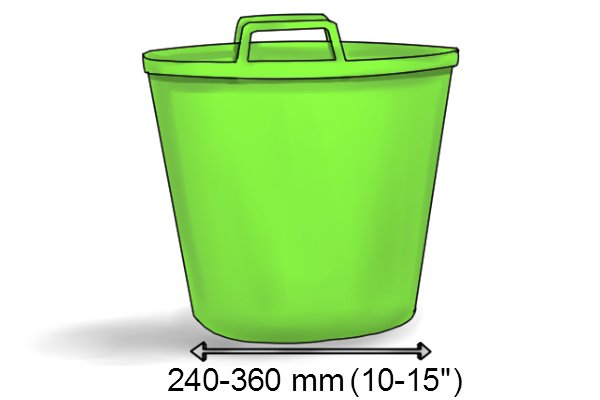
How to choose the right mixer for a drill or mixer?
Content
| When choosing the right mixing paddle, you must choose the design of the paddle to mix it with. For example, if its blade makes a strong suction movement, then it is suitable for plaster, as you must avoid getting air into this mixture. You also need to consider the liter container you are going to mix and choose the right size paddle. | |
Paddle size | |
 | Keep in mind that the diameter of the paddle should be between one third and one half of the mixing bowl or container. Choose a drill or mixer for their power and speed to get the best mixing result. |
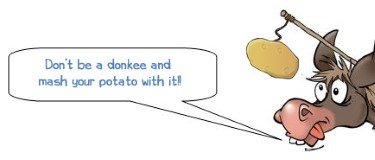 | For example, if the paddle diameter is 120 mm (5 inches), then the mixing container or tank should be between 240-360 mm (10-15 inches). in the container comfortably without getting stuck or damaging the container. |
semicircular heads | |
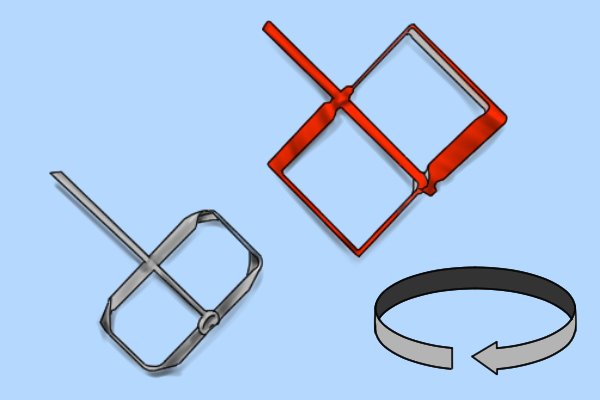 | Only found on this type of blending paddle, this semi-round head is designed with a grid in the center for easy, clean mashing. the ability to escape through the mesh back into the tub or container. Using this tool is similar to mashing potatoes, however you cannot mash the plaster with a potato masher as it will not support the weight of the plaster and will eventually damage the potato masher. |
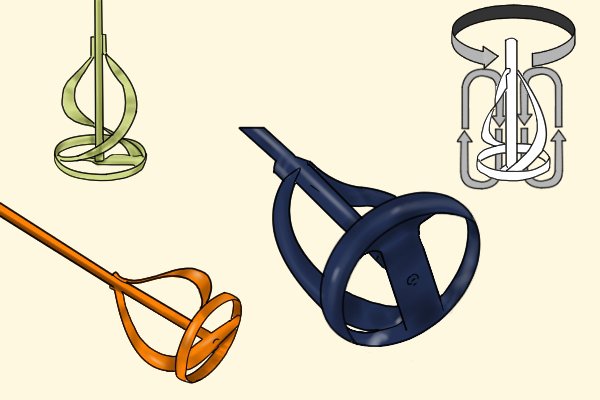 | |
Wheel blade design | |
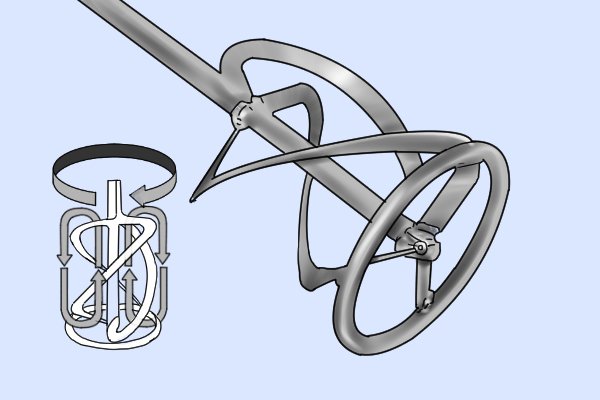 | This 'aluminum wheel' and 'steel tubular shaft' blade design means it's ideal for heavy-duty applications. This mixing paddle is designed to be used by hand when the wheel is placed into the mixture. Because this tool has a T-handle, it gives the user more control so that the wheel can be pushed from top to bottom and pulled from bottom to top, with the mixture free to flow through the center of the wheel as it warms up, ensuring nothing is missed. |
Gate blade designs | |
 | It is called "Gate Gate" because its blade is shaped like a large gate. This blade design is suitable for low speed drills as minimal power consumption is required to achieve low drag when mixing light materials such as plaster, self leveling compound and similar materials. This is the constant movement of the blade using the least possible amount of energy while maintaining the movement of the material. |
propeller structures | |
 | With three plastic propeller blades, the blade mixes and moves the material from bottom to top using a radial mixing action. This action creates shear stress on fluids and is used to stir viscous fluids. |
Twin propeller design | |
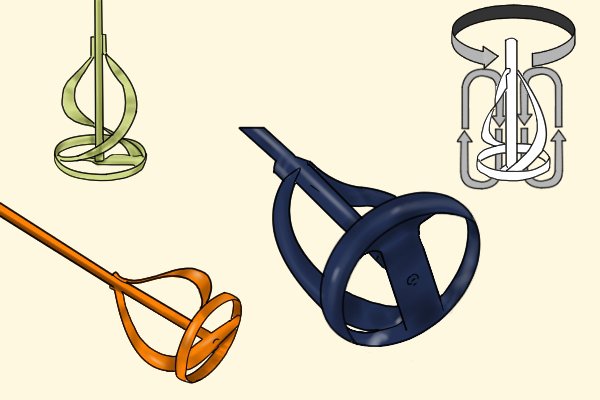 | This design will help produce a low spatter mix, with the propeller blades producing a parallel action of the mix, helping to mix and distribute the materials being used. Creating a mixture with a low level of spatter is very beneficial, but this does not mean that this blade is more expensive. |
Spiral blade designs (two blades) | |
 | This helical blade design is a two-blade version of the three-blade helical design with less shear on the blades. The blades require less torque from a power tool and can mix paints, adhesives, fillers and coatings. |
Spiral blades (three blades) | |
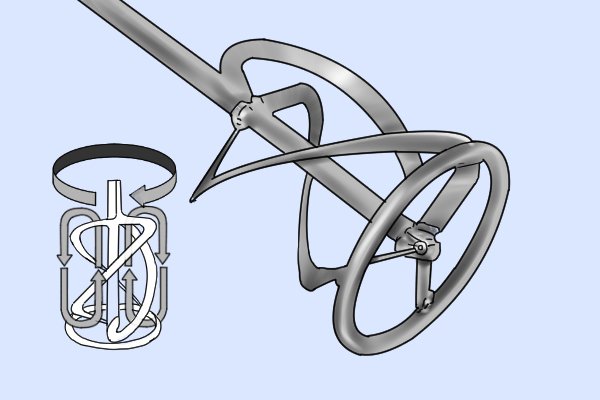 | This stainless steel spiral blade consists of three blades: two helical blades and one blade crossing two spiral blades. material from bottom to top. You can also find this reverse spiral paddle design that performs a top-down mixing action. |
Oar design with hoop | |
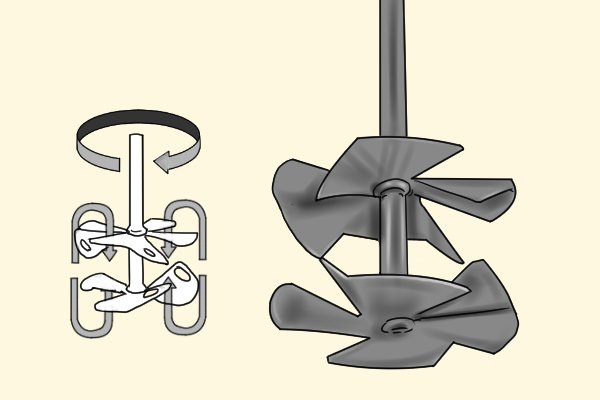 | This paddle design is made from durable professional grade steel, making it suitable for flipping and whipping large volumes of anchoring materials. |
Angled oars | |
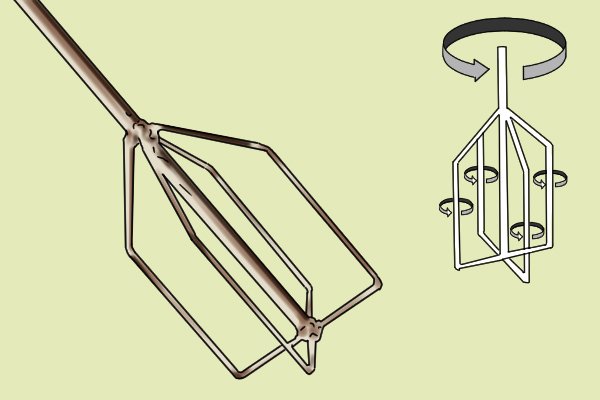 | This paddle is designed for strong suction to prevent air from getting into the mixture. If air gets into your mixture, air bubbles may form during the application of the mixture, causing problems. The paddle is designed to spin and whip, making it the most suitable for liquids. |
Helical spiral blades (no rim) | |
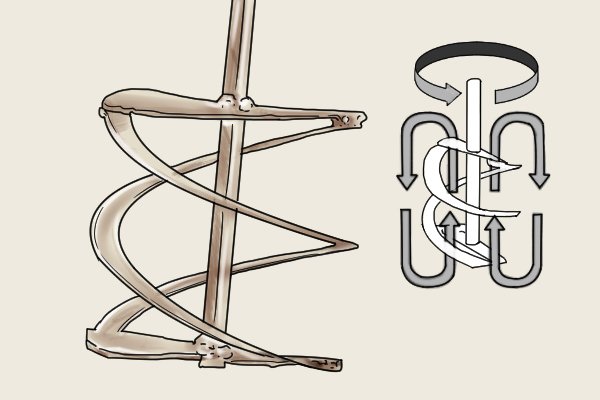 | This helical spiral paddle turns and lifts the mixture from bottom to top; it is the most efficient paddle for heavier mortars, epoxy, plaster and screed. The absence of a rim at the bottom of the paddle means that the paddles are not protected from damage or markings on the tub or container being used. |
Helical spiral blades (with rim) | |
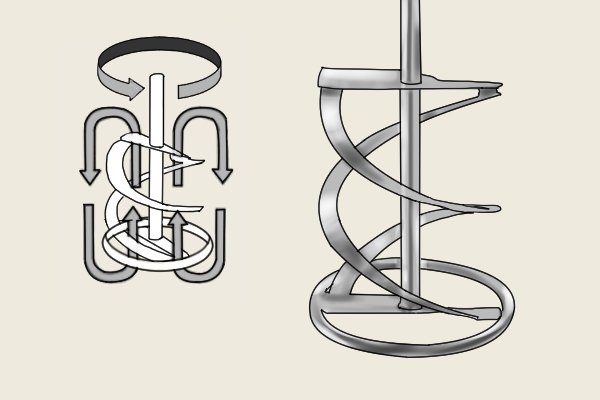 | This helical spiral paddle turns and lifts the mixture from bottom to top; it is the most effective shovel for heavy mortars, epoxy, plaster and screed. The rim, located at the bottom of the spatula around the blades, protects the tub or container in use. |

